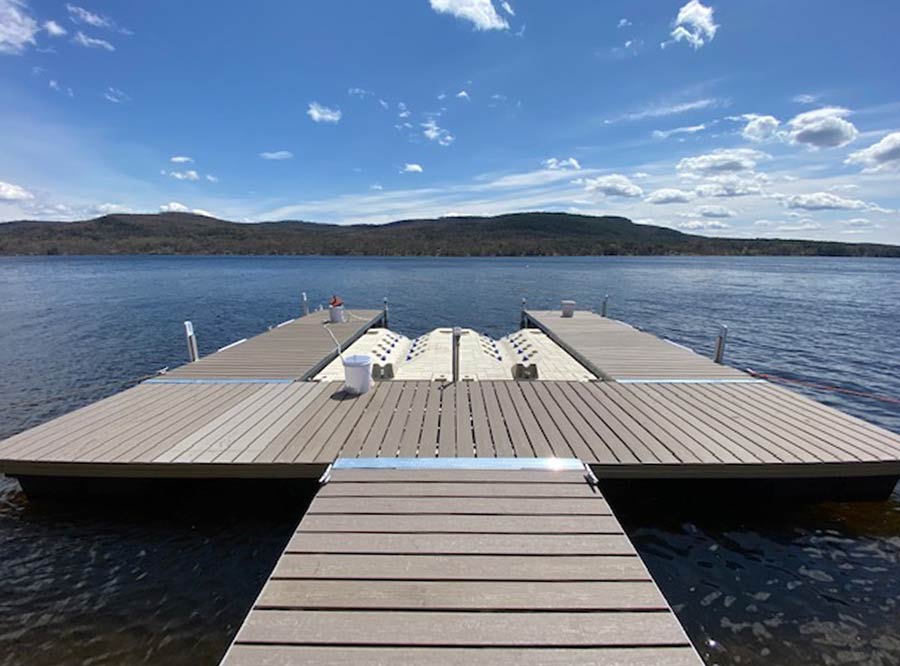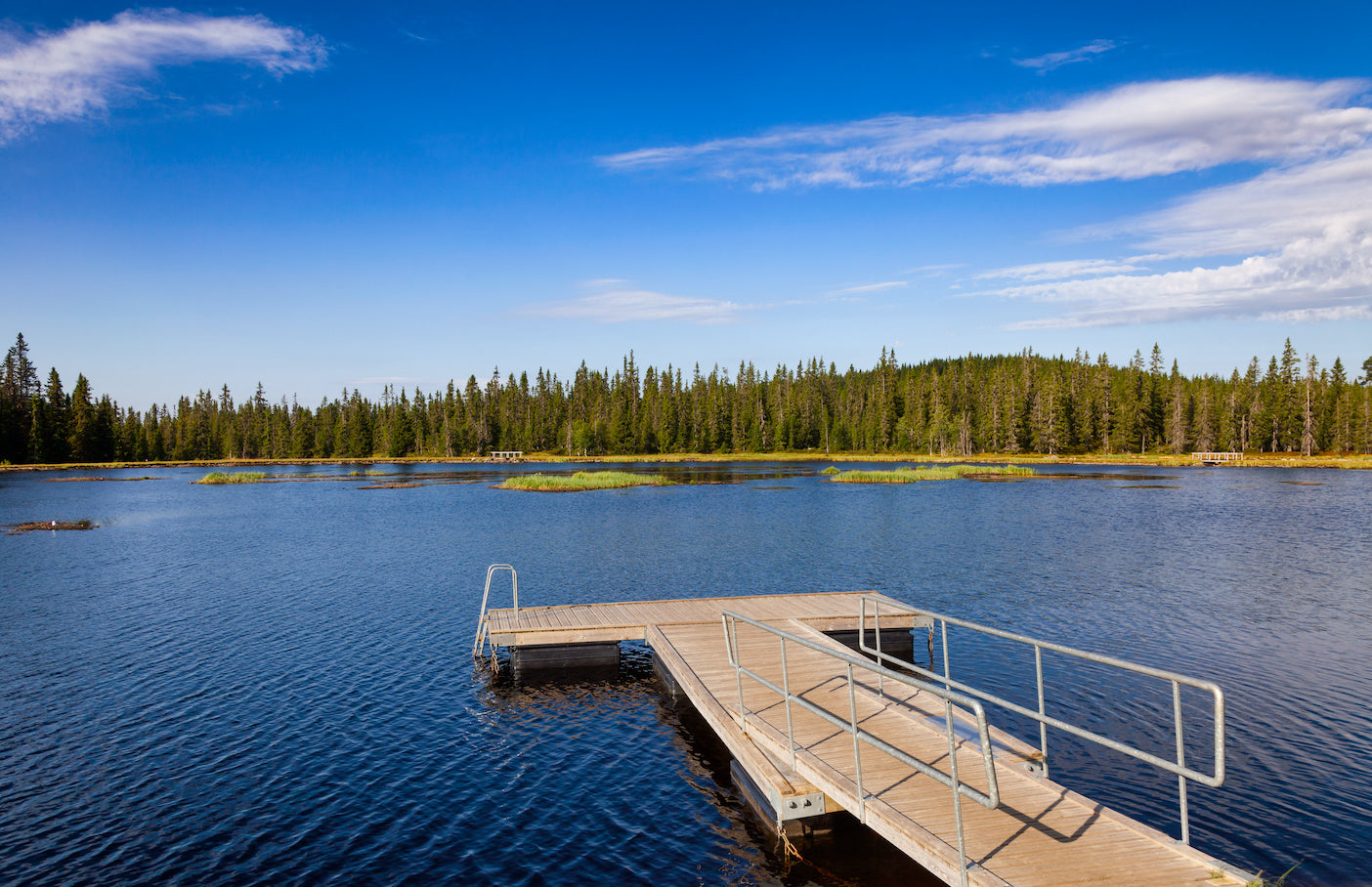Create the Perfect Docking Remedy With Floating Docks
Floating docks present a functional solution for a variety of maritime needs, adapting effortlessly to rising and fall water levels and varied vessel types. Their modular nature permits quick installation and relocation, yet the selection of proper products and style functions is important for making certain both functionality and visual allure. As we check out the necessary components that add to the efficiency of floating docks, numerous crucial aspects regarding stability and upkeep will certainly emerge, increasing questions about how to enhance your docking experience. The subsequent discussion will certainly light up these important considerations.

Advantages of Floating Docks
Floating docks deal countless benefits that make them a perfect choice for different maritime applications. Among the primary benefits is their adaptability to changing water levels. Unlike taken care of docks, floating docks surge and fall with the tide, ensuring consistent ease of access for vessels. This attribute is specifically vital in locations susceptible to considerable tidal changes or seasonal water level changes.
In addition, floating docks are normally less complicated and quicker to mount compared to standard set structures. Their modular layout enables for straightforward assembly and disassembly, facilitating upkeep and moving when necessary. This adaptability is specifically beneficial for temporary applications or in atmospheres where problems might transform.
Floating docks also have a tendency to be a lot more eco-friendly, as they minimize disturbance to the seabed and bordering aquatic communities. Their resilient nature minimizes the danger of damages to marine life, advertising a much healthier setting. Furthermore, these docks can be customized to accommodate different vessel sizes, making certain that they satisfy certain functional demands - floating dock services.
Eventually, the combination of flexibility, simplicity of setup, and environmental factors to consider makes floating docks a highly reliable remedy for a wide array of maritime requirements.
Picking the Right Products
Picking the suitable products for floating docks is critical to guarantee durability, longevity, and security. The option of materials straight affects the dock's efficiency in numerous environmental conditions, consisting of direct exposure to water, sunshine, and potential wear from marine website traffic.
Typical materials utilized for floating docks consist of aluminum, timber, and high-density polyethylene (HDPE) Aluminum is light-weight, corrosion-resistant, and needs very little upkeep, making it a superb option for longevity. Its preliminary expense can be higher contrasted to other products.
Wood, while cosmetically appealing and providing a conventional appearance, can be vulnerable to rot and pest damage if not appropriately treated. As a result, using pressure-treated timber or normally sturdy types like cedar or redwood can minimize these problems.
HDPE is a preferred choice as a result of its resistance to UV rays and chemicals, along with being eco-friendly. floating dock company. It is light-weight and offered in different colors, permitting customization
Inevitably, the appropriate material option will depend upon specific demands, including spending plan, desired looks, and environmental considerations. Mindful examination of these aspects will certainly cause a successful and durable floating dock option.
Design Considerations for Stability
When designing floating docks, guaranteeing stability is a fundamental aspect that can considerably impact their functionality and security. Stability in floating dock style is affected by various variables, including buoyancy, weight distribution, and the arrangement of components.
Weight distribution is critical; equally dispersing lots throughout the dock prevents turning and boosts security. This can be attained via browse around these guys strategic placement of docking equipment, such as fenders and cleats, in addition to appropriate spacing of floats. Furthermore, the Related Site measurements of the dock ought to be thoughtfully prepared. Wider designs can supply raised security, especially in rough water conditions, while longer docks might call for extra supports to stop sagging.
Another crucial consideration is the ecological effect, including wave activity and wind. Incorporating attributes such as sidewalls or skirting can assist mitigate the impacts of environmental pressures, maintaining security in adverse problems. Ultimately, a mix of thoughtful design, product selection, and understanding of ecological variables will certainly produce a floating dock that fulfills both security and safety needs.
Setup Tips and Strategies

Following, secure the required authorizations and stick to neighborhood guidelines, which might dictate setup methods and environmental factors to consider. If called for, involve a certified specialist experienced in floating dock installations. Usage high-grade products developed for marine settings to improve sturdiness and longevity.
When placing the dock, straighten it alongside the coastline to assist in easy access. Make sure that the anchoring system is robust, using cinder block or helical anchors to maintain the dock against wind and wave activity. It's vital to represent seasonal water degree changes, including possible ice movement in cooler climates.
Throughout the setup, double-check the dock's floatation and security before settling the anchoring. Frequently inspect the setup for any indications of wear or damage. By complying with these techniques and ideas, you can achieve a safe and secure, practical, and cosmetically pleasing floating dock setup that meets your requirements.
Maintenance and Treatment Guidelines
Keeping and caring for floating docks is vital to lengthening their lifespan and making sure secure use. Normal inspections need to be carried out to recognize any kind of signs of wear, damage, or marine growth. Search for fractures, loosened fittings, or tarnished locations on the dock's surface area, as these concerns can endanger architectural honesty.
Cleansing is crucial. Use a stress washing machine to get rid of algae, barnacles, and particles, which can gather over time. For persistent development, consider eco-friendly cleaner that will not hurt water life.
Furthermore, inspect the mooring lines and anchors frequently to ensure they are protected and totally free from corrosion. Change any kind of frayed or damaged lines promptly to keep security.
During extreme climate, such as tornados or freezing conditions, take precautionary measures. Safeguard the dock with added mooring lines and, if practical, remove any removable elements to avoid damages.
Final Thought
In conclusion, the execution of floating docks offers a versatile and effective docking option suitable for different maritime applications. With correct setup and normal maintenance, floating docks can give reliable and dependable docking experiences for a large range of vessels.
As we check out the essential aspects that add to the performance of floating docks, several crucial variables regarding stability and maintenance will certainly arise, elevating questions see post about exactly how to maximize your docking experience. Unlike fixed docks, floating docks increase and fall with the tide, making certain consistent ease of access for vessels.When creating floating docks, making sure stability is a fundamental aspect that can substantially impact their capability and safety and security. Security in floating dock style is affected by different aspects, consisting of buoyancy, weight circulation, and the plan of elements. Eventually, a combination of thoughtful design, material selection, and understanding of ecological factors will generate a drifting dock that fulfills both security and security requirements.